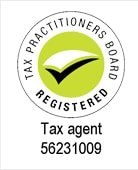
Building a house or apartment suitable to be rented to participants of the NDIS can be a profitable investment. There are 4 different levels of building design that needs to meet the requirement of the NDIS and they begin with the most basic model to the high support one which is almost at hospital level.
Improved Liveability
Robust
Fully Accessible
High Physical Support
The NDIS pays out a rent level based on these four types of standards; the rental rates start at a lower rate for the improved liveability to a much higher rate for the High Physical support. Naturally, the increased rent corresponds to the extra building requirements that are needed for each residence. The costs involved with these extra requirements are not cheap, but they can be offset with the higher rent returns and the fact that it is a government benefit being paid through the lessees that can make it a safer long-term prospect.
Housing types can be Apartments, Villas, Duplexes or stand-alone homes. Apartments for the most part would be out of the range of individual investors, so it mostly falls within the range of Villas or houses. Its also important that you need to work through a registered service provider approved by the NDIS to even build these homes and hope they are suitable to be part of the scheme.
In regards to where to build is another important question as the NDIS scheme requires the homes to be within in certain areas that are close to public transport or train stations. There can also be resistance to this type of housing in certain subdivision from developers and existing residents.
However, if you can overcome these drawbacks the returns can be quite good. The NDIS have an extensive base price list for these homes that can be difficult to read but here is one example for a recent home that we have done.
Located in Pimpama, Queensland was a new 215m2 4-bedroom home built on a 350 m2 block of land. The land requirement needed to have a minimum of 12.50 frontage to make it more accessible for the external paths and garden areas. To build this house as a standard build would normally cost about $260,000 – this house was designed to be a fully accessible standard (The third highest ) and the contract was $380,000 That’s $120,000 more than a normal house!
Why so expensive?
It all comes down the NDIS Housing design standards.
Here are some of the costs that need to be considered:
Ramps to external entrance ways (no steps )
Larger doors, entrance, bedroom, external laundry and patio etc
Larger hallways
High impact wall linings and thicker in some parts to hold disabled grab rails.
Increased noise abatement, more acoustic requirements to windows.
Disabled bathrooms
Accessible kitchens such as lower benches, pull out pantry baskets etc
Extra electrical requirements, lower switches, more GPOS etc
Air conditioning to bedrooms and living areas.
Adjustable robes
Safe safety plans, extra checks by fire services, evacuation lights etc
Lower window heights
Extra framing and strengthening to ceiling joists for bathrooms to be ready for ceiling hoists.
These are some of the extra requirements, but the list goes on.
For this house under the group home NDIS requirements the rents paid out could reach as much as $480 a person per week. If you have a 4-bedroom home, then this could be up to $2000 a week rent. Of course, there is no guarantee that you would even have 4 tenants but even having two is just under $1000 a week!
What does this mean in regard to depreciation?
Well with the higher build costs and more plant and equipment requirements then you can deduct back a lot more that a typical $260K home.
Typical 4-bedroom home $10,000 a year depreciation for the first 5 years
NDIS (Fully Accessible) with furniture $16,000 a year for the first 5 years
That extra $6000 a year deduction at 32.5 % PAYG rate is a bonus $2000 a year in year in your pocket not included the rent!




